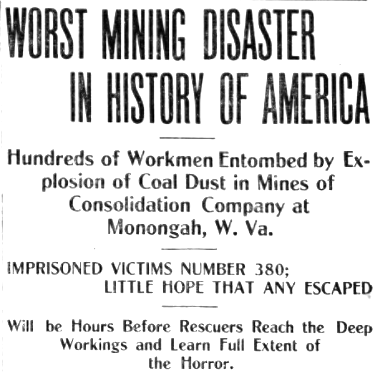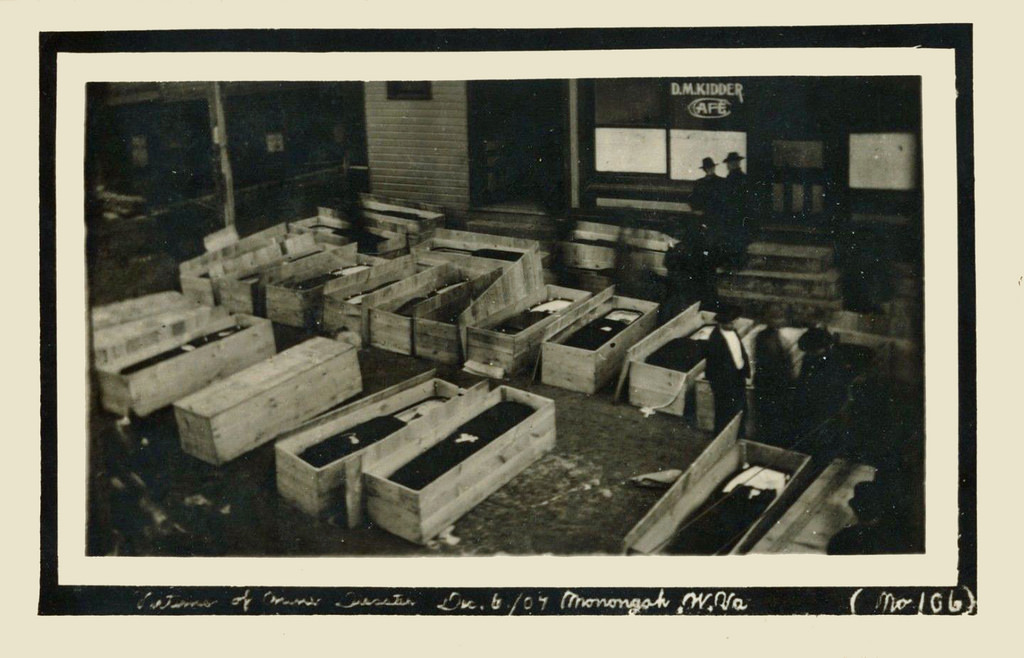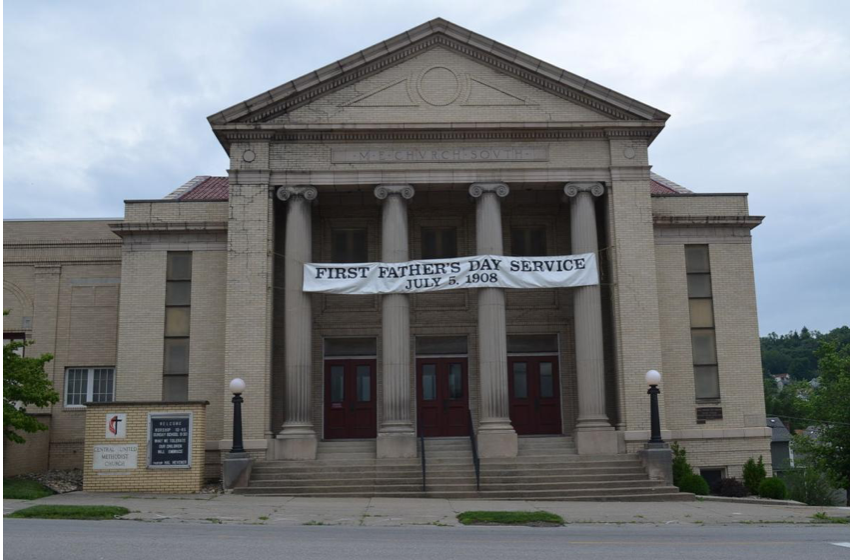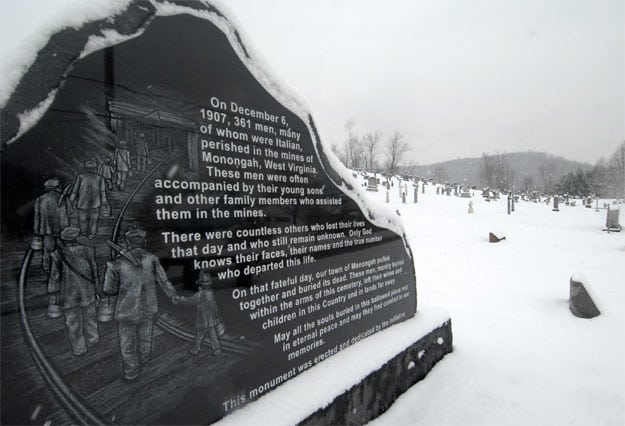
The Monongah Mine Disaster is recognized as the worst industrial disaster in U.S. history– and you’ve likely never heard about it. The disaster occurred in my hometown of Monongah, West Virginia. On the morning of December 6, 1907, at least 365 men and boys, ranging between the ages of 10-65 years old, died when two sudden and catastrophic explosions tore through conjoined mines #6 and #8. The report and quake of the blasts was said to be heard and felt for an estimated 10 mile radius.
Though 365 fatalities is the “official” death toll given by the company, it has always been understood among locals that the real death toll was much higher. There are many reasons for this false number, from the explosion being so volatile that many bodies were disintegrated on impact, to a quick and hasty cover-up so the mining industry could save face. Even the coal company acknowledged that it would be impossible to ever know the true number of men lost (though they did have a very accurate count of the horses and mules killed).
The disaster widowed over 250 women and left over 1,000 children without fathers or orphaned altogether. Grief permeated the entire region. Monongah’s mines were so large that many people in the surrounding areas worked or had family who worked within the two mines. Margaret Byington, a Red Cross worker involved with the relief aid in Monongah, described the place as a “…tragic little grey town, where sorrow meets one at every step…”
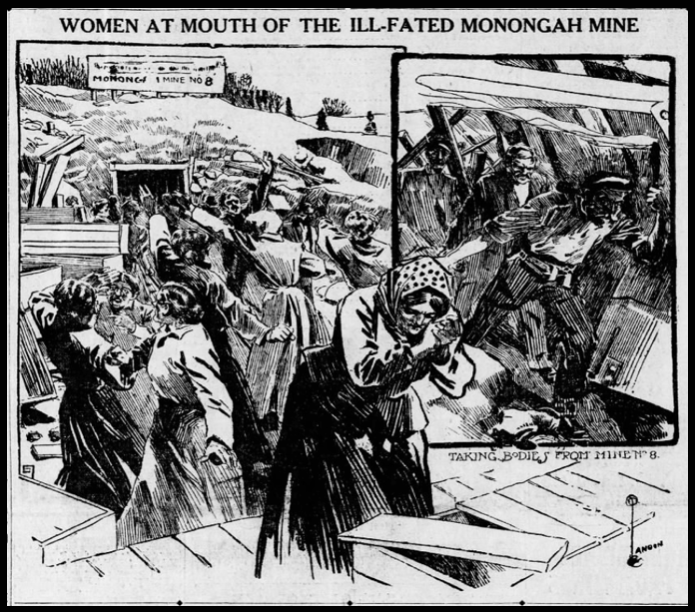 Enter Mrs. Grace Golden Clayton. In the summer of 1908, Grace Clayton suggested to pastor Dr. Robert Thomas Webb of Williams Memorial Methodist Episcopal Church South in Fairmont that a special service be held to honor and pay tribute to the legacies of fathers and paternal figures. Her suggestion was prompted not only by her grief for her own father’s death, but because of the disaster that happened barely six months earlier in Monongah.
Grace Clayton was able to deeply sympathize with the sorrow that seemed to engulf the Monongah community. She was compelled to recognize their collective grief and to honor the hundreds of miners – fathers, brothers, sons, husbands, grandfathers, uncles, cousins, friends – whose lives were lost. So, on Sunday, July 5, 1908 (just a few months after the first observance of Mother’s Day, which took place just up the road in Grafton, West Virginia), the first Father’s Day service was observed in Fairmont.
Enter Mrs. Grace Golden Clayton. In the summer of 1908, Grace Clayton suggested to pastor Dr. Robert Thomas Webb of Williams Memorial Methodist Episcopal Church South in Fairmont that a special service be held to honor and pay tribute to the legacies of fathers and paternal figures. Her suggestion was prompted not only by her grief for her own father’s death, but because of the disaster that happened barely six months earlier in Monongah.
Grace Clayton was able to deeply sympathize with the sorrow that seemed to engulf the Monongah community. She was compelled to recognize their collective grief and to honor the hundreds of miners – fathers, brothers, sons, husbands, grandfathers, uncles, cousins, friends – whose lives were lost. So, on Sunday, July 5, 1908 (just a few months after the first observance of Mother’s Day, which took place just up the road in Grafton, West Virginia), the first Father’s Day service was observed in Fairmont.
There is some controversy as to where the idea for Father’s Day in the United States truly originated. After all, paying annual homage to parents has been a long standing tradition across the globe. Father’s Day has been celebrated in many different countries on different days long before the U.S. jumped on the bandwagon and made it our own retail and commercial extravaganza.
As for the U.S., credit for the establishment of the holiday is given to the state of Washington and Sonora Smart Dodd for a 1910 service held at a Y.M.C.A. This service was inspired by the successful 1908 Mother’s Day service in West Virginia. But that was a full two years after the first Father’s Day held by Grace Clayton after the mining disaster.
A major reason for this first-time event getting lost to history is its date: July 5th. The first Father’s Day was overshadowed by the Fourth of July.
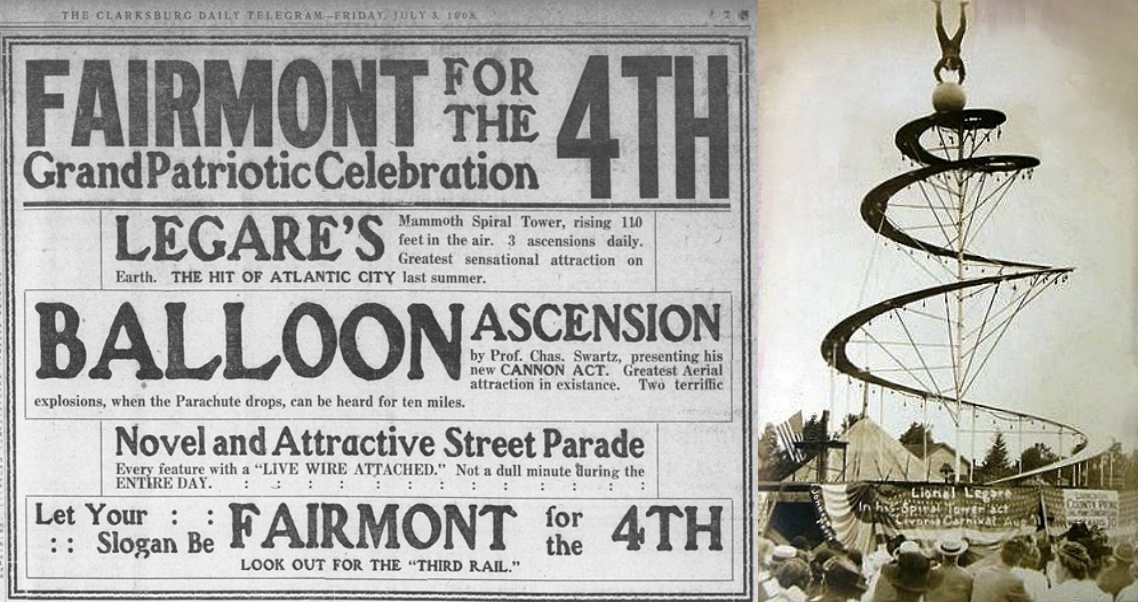
At the turn of the 20th century, Fairmont was a booming metropolis which boasted more resident millionaires and more religious and ethnic diversity than any other part of the country (not exactly what one thinks when considering West Virginia these days). The Fourth of July celebrations were all the rage, featuring week-long attractions with numerous revivals, traveling carnivals, sales, concerts, celebrities, parades, contests, and popular performers all building up to the major spectacle on the 4th. The residents and business owners of Fairmont went to great lengths to make the occasion free to the public in an attempt to lift the spirits of the community and provide a happy distraction from their grief (though I am not sure how much of a happy distraction the Monongah mourners actually got from the “two terrific explosions” at the end of the hot air balloon display).
Ultimately, Fairmont never insisted on getting the credit as being “the first”; instead, the focus is on recognizing both the dead and the mourners. This first service for fathers was not one of national promotion nor was it intended to be. Grace Clayton never promoted the service outside of the area, possibly not even to the local papers. More than likely, word about this service spread orally, given the majority of the target audience for this service would have been illiterate immigrants and children. Though she had every intention of honoring fathers everywhere, that first Father’s Day was a deeply personal and sorrowful experience. The sermon delivered on this occasion to mourners by Dr. Webb, has been forever lost.
Though the two mines in Monongah were back up and running by early February of 1908, the recovery and discovery of bodies and body parts continued for several more months, reportedly even as late as June of 1908. Remains found by this point were immediately “buried” within the mine. In result, for up to six months following the disaster, there were those who still harbored hope that the remains of their loved one might still be discovered, brought to the surface and identified so they could lay them to rest on their own terms. By the beginning of July it would have thoroughly sunk in to the majority of mourners that if something had not yet been found yet, it would never be. This first Father’s Day was, for many, the first and only funeral service they ever got for their lost dead.

